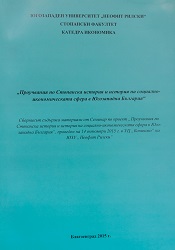
We kindly inform you that, as long as the subject affiliation of our 300.000+ articles is in progress, you might get unsufficient or no results on your third level or second level search. In this case, please broaden your search criteria.

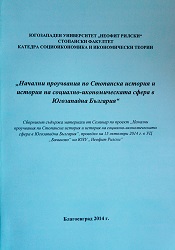
The collection contains materials from the Seminar on the "Initial Researches in Economic History and History of the Socio-Economic Sphere in Southwestern Bulgaria", held on October 15, 2014 in University center "Bachinovo" of South-West University.
More...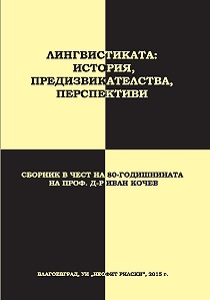
Conference Proceedings “Linguistics: History, Challenges, Perspectives” (2015) are dedicated to the 80th anniversary of Prof. Dr. Ivan Kochev. The papers which are part of the Proceedings are close to Prof. Kochev’s diverse research interests. There are several sections – the first contains the plenary reports of Prof. Emilia Pernishka; Prof. Lilia Ilieva (1774), Prof. Antony Stoilov and Prof. Anna Choleva-Dimitrova. Their papers cover different linguistic topics, especially related to South-Slavic and Balkan linguistics. The second section is named “Dialectology. History of language. Word Formation” and it comprises 13 papers written by 15 researchers. The next section is called “Comparative and Contrastive Linguistics. Foreign Languages” and contains 13 papers as well. Authors are from different countries and their work includes various languages. The forth part of the Proceedings “Lexicology and Lexicography of Bulgarian language” incorporates papers of 10 researchers from Bulgaria, Ukraine, and Albania, dealing with some problems of modern and historical lexicology/ lexicography in Slavic and Balkan context. The fifth section, named “Stylistics and Pragmatics. Language and Communication”, explores the so-called communicative approaches and methods to languages. It includes 10 papers from 13 Bulgarian and foreign linguists. The next part “Grammar of Contemporary Bulgarian Language” includes texts devoted to Bulgarian morphology and syntax. The last section is called “Interactive Teaching Methods” and it concerns some pedagogical issues.
More...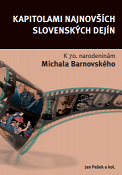
During and after World War II, Slovakia underwent massive political, economic, social and state constitutional changes. Being the part of the international events of the “hot” and Cold War, it had been brand marked by the two nondemocratic, totalitarian regimes – fascist and communist. After the Slovak Republic, which was in 1939 – 1945 a satellite state of the Nazi Germany, Slovakia became a part of the reconstructed Czechoslovak Republic with its specific system of “the limited democracy”. The communist coup d’état in February 1948 had brought the country under the rule of another totalitarian regime, spreading from Moscow to all states of the Soviet block. Though, the Czechoslovak society in 1968 tried to reform the communist system, it was unsuccessful in the same way as some other Soviet block countries, which also attempted to disengage the chains of the Soviet imposed regime. This period of the modern Slovak history has been – mainly after 1989 – a subject of numerous studies. Nevertheless, it is still researched only partially, some problems more other less. At the most is missing the synthesis of the contemporary history of Slovakia. The Institute of History of SAS is trying to fill this gape with a project Slovakia in the 20th century granted by the state Agency for Support of Science and Research. The part of this project will be the collective monograph (as the volume V) dealing with the history of Slovakia in 1945 – 1968, and its authors plan for the future also the next, sixth, volume of this synthesis. The book Chapters from the Slovak Contemporary History, which now the reader has in his hands, is also aimed at the presentation of some key or important problems of the Slovak war and postwar history. But it is not the only goal. The publication is also a tribute to the 70. life jubilee of an outstanding Slovak historian Michal Barnovský. His forty-five years of scientific career in the Institute of History have enriched the Slovak historiography in the field of the contemporary Slovak history. In which researched themes and to what extend, the reader may find in the introductory article and in the selected bibliography of Dr. Barnovský. The book begins with chapters showing the multiplicity of the history of the Slovakia and the Slovak question during World War II. The first one (author Jozef Bystrický) describes the role, which the Slovak army played in the plans of the Czechoslovak Ministry of National Defense (MND) in London in 1943 – 1944. Various documents, especially the Directives from 1943, enclosed the views of the London exile, how to engage the army of the Slovak state in the rising against its regime and in military resistance against the Nazi Germany. Though, the Military Headquarters in Slovakia preparing and then in August 1944 realizing the uprising had had to take in account the specific situation on the Slovak territory at the given moment, the MND instructions and directives influenced highly positive the contents, character and the quality of the military-technical arrangements for the rising. The second chapter of this Slovak state points at issue deals with the specific phenomenon of the regime propaganda. In this connection the author Marína Zavacká analyses a Slovak state journal Vĺča (The Young Wolf) for boys of age between 6 and 10, members of Wolf corps of the Hlinka’s Youth organization. It served as a regime-sponsored source of officially approved children’s role-models, including patterns of deeds to be followed. The study summarizes different propagandist vehicles used for making up heroic stories, ranging from social sacrifice to the sacrifice of life. Following four chapters concentrate on several important problems during the period of “the limited democracy”. One of the crucial questions of those times was the position of the Slovakia in the newly reconstructed republic and the search for the model of the future co-existence of the Czechs and Slovaks. Marek Syrný in his text examines this complicated problem from the point of view Democratic Party (DP), which arouse from the Slovak National Uprising as the strongest noncommunist political subject in Slovakia. The idea of its leaders was the Czechoslovakia as de facto federal state. The decline of this DP plans was pronounced in the course of discussions to the three Prague agreements, which had been till February 1948 more and more influenced by the struggle for power between democrats and communists. The next chapter by Slavomír Michálek shows one of the key problems of this period in the sphere of the foreign policy: the aims and the activities of the Czechoslovak delegation at the Paris Peace Conference 1946, which were concentrated on the preparation of the treaty with Hungary. Beside the participation of the two leading figures of the delegation – Jan Masaryk and Vladimír Clementis – the author follows especially Juraj Slávik. Slovak born Slávik, who during his professional life belonged to the influential personalities of the Czechoslovak policy and diplomacy, participated at the finalizing the peace treaty texts regarding Hungary. Although the Slovaks felt the Hungarian problem as the most important for them, there had been another national community in Slovakia which postwar destiny radically changed. The German minority had been evacuated by German authorities, before the Red Army had crossed the Slovak borders (the chapter written by Milan Olejník). After the war had ended many of the Germans returned home, but there they fell under the decrees of President Beneš. Due to them they lost the Czechoslovak citizenship, underwent political, economic and social discrimination and 32-tousand of them were expelled. In 1948 to the rest of them the citizenship was returned, but the minority rights they have been lacking until 1989. The last chapter covering the period 1945 – 1948 belongs to the commentated document in which the French Consul General in Bratislava E. M. Manac’h informs his government about the key political phenomena in Slovakia during the Czechoslovak crisis in February 1948. The commentator of the material – published in Slovak translation and in French original – Pavol Petruf stresses, that E. M. Manac’h stated that the events between 21 and 27 February 1948 had shown the communists, in comparison to their democratic opponents, as better prepared for solving the batte for power. Couple of problems connected with the the communist coup d’état in February 1948 are the subject of another chapters. Miroslav Londák in his text analyses the changes of the economy system in Czechoslovakia and Slovakia, which had taken place in the first, “founding” period of the new regime. They resulted into the socalled socialist economy, based almost entirely upon the state ownership and directed by the centrally composed five years plans. The author also points out the specifics of the development in Slovakia and the determinants of its socialist industrialization. Another sector of economy – the agrarian one, is the topic of the chapter written by Viera Hlavová. The strategy of the communists immediately after the war was to get peasants on their side and therefore they had rejected the cooperatives of the Soviet type. But after the February 1948 the primary task became to re-orient the small agrarian production to the large-scale socialist one, to form state agricultural enterprises and, in the same time, to fight the “capitalist elements” in the country. The village had been transformed according to the Soviet mode, without respecting the specifics of the Czechoslovak and Slovak agriculture. The same regime changes as upon the Slovaks, dropped down upon the members of the Hungarian minority. In addition to it – as Soňa Gabzdilová-Olejníková states – immediately after the coup d’état the exchange of the inhabitants between Czechoslovakia and Hungary continued, the plans were made for the second stage of re-Slovakization and there was no hope for in the Czech lands deported Hungarians to return back to Slovakia. In this respect the situation changed with incorporation of the principles of so-called proletarian internationalism into the mutual relations between the communist parties of Hungary and Czechoslovakia. The communist coup d’état influenced also the Slovak postwar emigration, which had been concentrated at the free and independent Slovakia. As Karel Kaplan in his chapter analyses, this Slovak exile was for a long time devided, but after the February 1948 Karol Sidor – one of the leading figures of the Slovak autonomist émigrés – successfully formed the Slovak National Council Abroad, the umbrella organization of the Slovak political exile. The direct influence of the exile states in his text also Vladimír Varinský, who surveys the formation of The White Legion organizations in Slovakia. Although it was possible, that some of these organizations provoked the State Security, the newest research shows that the main cause of their secret existence and activities was a spontaneous resistance of the people against the practices of a new regime. And the reaction of the communist establishment was persecutions. The most brutal form of them had been the framed political trials and the two of them from the beginning of the 50ties depicts in his chapter Jozef Leikert. Based upon the archival research, but mostly upon oral testimony he analyses them from the point of view of their insider, journalist and writer Ladislav Mňačko. He witnessed these trials as the daily news Pravda journalist and influenced the public in accordance with the regime propaganda. But later on he came round to realize its fabricated character and confessed his part of guilt. In the shadow of the “founding” period of the communist system with its totalitarian practices and persecutions stays the sometimes natural development – though politically and ideologically distorted – of various phenomena in the Slovak society. One of them, the development of the Slovak science from its half-amateur stage to internationally accepted partner, shows in her chapter Elena Londáková. She concentrates on the Slovak Academy of Sciences, but deals also with the complex of the state and party policy towards the science and its various branches. On the outside and from the point of view of communist leaders the “founding” period represented a successful establishing of the communist system. But already in this time there were the signs of the crisis, which is immanent to this type of regime. Jiří Pernes in his text summarizes the various opinions regarding its beginnings. Unlike Karel Kaplan, who talks about the crisis in 1953 – 1957, Pernes inclines to take in account deeper tokens of it, which perhaps started the crisis development already in the early 50ties. With the chapter of Václav Vondrášek the themes of the publication move chronologically to the history of the 60ties. He surveys the activities of the Hlinka’s Peoples Party exile at the turn of 50ties and 60ties and the countermeasures of the communist establishment in Slovakia. The efforts to unify this exile abroad, watched the communist regime in Czechoslovakia with suspicion. As the reaction, the State Security activities towards the potential followers of this exile branch started to intensify. So much more that in connection with the further restriction of power of the Slovak national institutions and worsening of the economic situation the discontent in Slovakia had grown. This special Slovak national discontent created also one of the differences in perception of the “Prague Spring” in the Czech and Slovak societies. As the author of this chapter, Stanislav Sikora states, during the attempt to reform the Soviet type of socialism in 1968, both state building nations in Czechoslovakia had their own conceptions of the democratization process. While in the Czech lands the priority was the general democratization of the political system, Slovaks felt it as the opportunity for the further national emancipation. But the newest studies also show that also the Slovak society was more diversified than this traditional characteristic says. The next chapter of the book treats the staffing transgression of the communist regime into the activities of the Slovak Evangelic Church of the Augsburg Confession in 1948 – 1989. Jan Pešek in his text analyses the communist regime attempts to rule over all spheres of the society, including the churches. In the case of Slovak Evangelic Church of the Augsburg Confession the establishment used the traditional election of all church and laic authorities for its own purposes. With various practices influenced the elections to the benefit of persons, willing to cooperate with the regime. In this way the ability of the Evangelic Church of the Augsburg Confession to resist the pressure of the communist system had been markedly weakened. Also the following chapter treats a specific issue. Jan Rychlík surveys the travel relations between Czechoslovakia and Poland in 1980 – 1989. The point is that in connection with the strikes in Poland and forming the independent trade union Solidarity, the Czechoslovak authorities started to be afraid of the free travel possibilities between two countries. There were two causes for this fear: political and economic. The author very precisely documents the official measures and economic circumstances, which for more than a decade regulated the travel transfer between the Czechoslovakia and Poland. The last chapter of the book by Juraj Marušiak bridges the history and contemporary development. It is an analysis of the perception of the past by the Slovak society and of its influence on the development after the November 1989. The author concentrates on the perception of the two totalitarian regimes – that of the war Slovak state and of the communist period. He comes to conclusion that in the Slovakia the roots of democratic tradition are not strong enough, which should be the result of the political system before 1918. Both totalitarian regimes of the 20th century used these behavior patterns of the population and on the other hand a great part of the people identified themselves with these regimes.
More...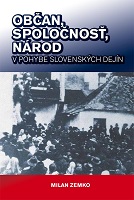
The author of the book pays attention to four major problem areas in the modern history of the Slovak nation, the society and the country. The research is focused on the Slovak history in the first half of the 20th century and, particularly, the period of the Czechoslovak Republic between the two World Wars. In chapters of Part 1 entitled Slovak Society within Changes of Historical Time the author tried to classify relatively short period of interwar Slovak history in wider historical interrelations. In the first chapter he examines the problem of periodization of the Slovak history within the context of history of the other Central European nations, and points at the open methodological questions of the Slovak history research ensuing from insufficient investigation of the changing collective identity of the Slovaks. The next two chapters of Part 1 are devoted to historical heritage of the Slovaks and its peripetia related to generation of Ľudovít Štúr, as the first politically oriented and functioning generation in the modern history of the Slovaks, and following generations up to the origin of Czechoslovakia in 1918. The topic of the following chapter is the examination of historical traditions and stereotypes of the last two centuries which support, eventually weaken the renewed democratic political system in Slovakia after the fall of the Communist regime in 1989 and the origin of the independent Slovak Republic in 1993. Next two chapters research a historical memory of the Slovak society relating to the autoritarian Slovak Republic between 1939 and 1945 and to the Slovak National Uprising of 1944, being the symbol of anti-fascist struggle and democratic future of Slovakia. The last chapter of Part 1 deals with the simplifying contradiction between the civil and national principle in the history and the present time, as manifested in expert discourse as well as in journalism upon renewal of the democratic regime after 1989. In Part 2 entitled Politics and Its Faces on Interwar Party Arena the author is concentrated on domestic policy in interwar Czechoslovak Republic. The first chapter deals with violation of some democratic rules in the first decade of existence of the new Czechoslovak State. The further two chapters are concerned with the question of relations between the Agrarian Party, as the largest government party and Hlinka’s Slovak People’s Party in the time of functioning in the joint government coalition in the second half of twenties of the former century and the conflict relations between two head personalities of the Slovak agrarians Milan Hodža and Vavro Šrobár. The subject of the author’s study is also the trend of authorities to keep the cult of the first president of the Republic T. G. Masaryk already during his lifetime in dimensions unusual for the European democratic countries. The last but one chapter of this part of the book examines the fragility and weakness of the Slovak democracy which had fully manifested itself in autumn months of 1938 after adoption of Munich Agreement by the Czechoslovak government. The People’s Party had managed then, also due to inability of the weakened democratic parties to remove in a short time the parliamentary democracy and to set down an authoritative rightist regime in Slovakia. The loyal service of the Slovak intellectual Vladimír Clementis to the Communist movement and regime, for which he was “rewarded” by death penalty and execution in 1952, is depicted in the last chapter of this part of the book. Part 3 of the book entitled Political Echoes of Ethnic Colourfulness of the Republic in Interwar Period is devoted in its five chapters to one of the most remarkable features of interwar Czechoslovakia and its consequences – to question of more or less conflict coexistence of nations and ethnic groups living in this Republic. The examination of regional aspects of the ethnic problem in the capital of Slovakia, Bratislava, is treated in the first two chapters of this part of the book. The next two chapters are concerned with policies of the national minority parties in the Czechoslovak Republic and participation of the German minority parties in the government coalitions of the interwar period. Based on the research the author comes to the conclusion that the proportional electoral system of interwar Czechoslovak Republic enabled in principle equitable representation of national minorities in the Parliament, and some German minority parties took an active part in the government policy since mid-20’s up to spring 1938, when the political game was energetically encroached by a strong external factor – Nazi Germany. The last chapter is devoted to interwar sources and inspirations for, in final consequences, unsuccessful attempt of radical “solution” of Hungarian question in Czechoslovakia after World War II. The final part of the book entitled Slovakia in the Modern Central European History includes the chapters with a various themes concerning the position of Czechoslovakia and, in its context, of Slovakia in the Central European area: a sharp critique of Czechoslovak-Soviet Treaty of 1935 from the point of view of radical rightist and nationalist newspaper Nástup, differences in views on postwar future of Central Europe by two prominent exile politicians – the former president Edvard Beneš and the former prime minister Milan Hodža during World War II, complex interwar and war geopolitical challenges for Czechoslovakia faced with by E. Beneš, as well as the CzechoslovakHungarian and Slovak-Hungarian disputes about the southern border of Slovakia since the Trianon Peace Treaty of 1920 up to the Paris Peace Treaty in 1947. The influence of the modern Central Europe history on international position of the Slovak Republic after attaining of its independence in 1993 is outlined in the final chapter of this part of the book. To the book is added, as a historical document, a politological reflection of the spring 1968 entitled Socialism and National Democracy drafted as a contribution to a discussion on the future of the Slovak society in the period of the so-called Prague Spring, that is, before occupation of Czechoslovakia by the Warsaw Pact armies.
More...
The aim of the presented collection of 29 chapters and essays is to sketch a comprehensive picture of Slovak society, reflecting the interactions between its political and cultural elites, as well as the coherence of historiography and historical consciousness in the 20th century. It might be stressed that these relations weren’t static, although in their frames, some resistant stereotypes arose which are still very popular in some parts of Slovak society. The stereotypes, auto-stereotypes and myths never failed to exist; just the contrary – they were going through a process of specific evolution, influenced by numerous fundamental, state-political and constitutional changes, that attended the life of Slovak society in the past century. These changes, or better, ruptures with global social impact had not only positive, but also – and this seems to be the majority of the cases – negative consequences for the situation of particular generations living in Slovakia. Simultaneously, their determined all spheres of cultural life of Slovak society, much like the Slovak historiography influencing both its internal development and its perception by the public. The presented work is divided into four thematic parts. First of them is dealing with both the direct and the indirect impact of political events and decisions taken by the administration on citizens, i.e. particular parts of society. This is the reason, why the tragic issue of the so-called social engineering and Holocaust is also taken into consideration. The author is supposing, that the discrimination and persecution of certain groups of population defined by their nationality, religious, racial or class identity afflicted not only individual victims, but, taking into account its global impact, it was a tragedy for the whole society. In particular it devastated the moral, cultural and religious values of the society and its constitutional consciousness. Culture also suffered by these socio-political processes. The culture and its prominent representatives enjoyed a specific position within the public life in Slovakia, since they were either substituting the absenting “national policy” or they were an active part of this policy – representing and defending universal ideals of humanity proclaimed by themselves or, in other cases, representing the political elites. This contradicted engagement and existing intellectual disunity were symptomatic especially during the existence of non-democratic, i.e. totalitarian political regimes, which afflicted the most part of the decades of Slovak history in the 20th century. As a logical consequence, it resulted not only in disappointment and frustration of Slovak cultural elites, but also in lost of confidence by the citizens in what they have represented. The situation of the Slovak historiography that, as a professional scientific discipline and in its institutional form was going through a process of intensive development just in the frames of communist regime was some kind similar. Just as the culture, the Slovak historiography was also strongly influenced and eventually deformed by the political reality. Slovak professional historiography was facing two main challenges: on the one hand it had to reflect scientific problems and questions and, on the other hand, there was a necessity of defending its own social status and position within the social hierarchy. This position only partly resulted from the scientific outputs of the Slovak historiography, since the role it had to play was strictly defined by the communist state. During that time, the Slovak historiography was going through a difficult development including hopes, unfulfilled illusions, disappointments, disgraceful moral and professional failures, but also happier stages such as significant achievements or civil resistance against the political regime and its leading figures. From today’s perspective, taking into account these phenomenons, the biggest detriment the Slovak historiography had to suffer seems to be the multiple interruption of natural continuity of its development and the visible lack of confidence on the side of citizens that it is permanently trying to regain. On the other hand it should be pointed out that in spite of unfavorable political and social conditions in the past the Slovak professional historiography achieved remarkable scientific results that allowed, after 1989, to be a part of European scientific community. Fourth thematic part of the presented book is dedicated to chosen historical personalities playing significant role in the modern history of Slovakia. Also reflected are chosen historians, which in their professional career and work were able to harmonize their scientific abilities with their civic attitudes, regardless of the risks.
More...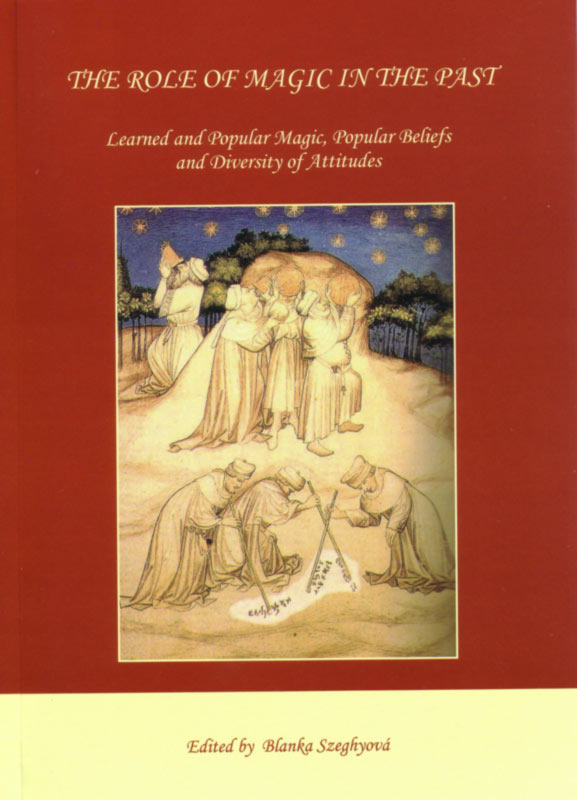
Magic in the past in its various forms, perceptions and definitions has been a popular subject of modern Western scholarship for a long time. In the countries of Central and Eastern Europe, in contrast, the issue of magic is still a rather neglected area of study. Apart from the study of witchcraft and apart from ethnologists or anthropologists, whose research interests usually include present or recent case studies and phenomena, the subject of magic has not yet received due attention from historians and other scholars of the humanities of the region. This can be partly explained by the fact that while communist policy with its stress on the class struggle preferred certain topics, mainly political, economic and social history, it practically brought other fields and research interests to a standstill.
More...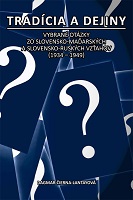
Výbery z diel niektorých autorov, publikované v poslednom období, stále častejšie ilustrujú fakt, že celá generácia historikov pomaly, ale isto starne a nebodaj i odchádza. A človek si napokon prekvapene uvedomí svoju príslušnosť k tejto skupine seniorov, za posledné roky vyzdvihovanej i zatracovanej. Na pranieri istej časti verejnosti sa mnohokrát ocitli najmä odborníci z novších domácich dejín, nakoľko medzi bežnými čitateľmi sa vždy nájdu jednotlivci, ktorí si čo to ešte pamätajú a po svojom aj hodnotia. V zložitej sústave historiografie možno hovoriť o určitej „výhode“, keď sa výskumník venuje predovšetkým otázkam všeobecných dejín a domáce udalosti konfrontuje s dianím v zahraničí. Hoci i tu možno nájsť úskalia, ak sledujeme témy v nedávnej minulosti zamlčované, či priamo zakázané. Pre tento zväzok vyberám niektoré z textov, publikovaných za posledných pätnásť rokov, teda v čase, keď sa konečne otvorila možnosť uzavretú tematiku spracovať: dovtedy boli do veľkej miery tabuizované archívne pramene k oficiálne utajovaným faktom a udalostiam. Sledovať problémy nahromadené do vzťahov Slovenska k Maďarsku a Rusku (v rámci ČSR alebo aj samostatne), za obdobie od roku 1934 do roku 1949, znamená sledovať mimoriadne zložité a zauzlené udalosti. A práve z tohto okruhu svojich záujmov som zvolila tematický záber ponúkaného výberu. Iba jedna kapitola sa vymyká z daného chronologického členenia a posúva sa do roku 1956. V niektorých príspevkoch, kratších i dlhších, publikovaných s rôznym odstupom, nebolo možné zachovať kontinuitu deja a neopakovať isté základné údaje. S tým sa napokon musí vo svojich publikáciách vyrovnať každý historik. Usporiadať texty prísne tematicky, alebo podľa skúmaného obdobia, sa ukázalo dosť zložité, nakoľko sa v sledovaných problémoch musím doslova posúvať tam i späť po rámcovej časovej línii. Napokon som celú knihu rozdelila na dva celky – Slovensko a Maďarsko, Slovensko a Sovietsky zväz – a v nich jednotlivé kapitoly označila rokom vydania a zaradila postupne. Témy, na ktoré sa v tomto výbere sústreďujem, prinášajú veľké množstvo najrozličnejších rozporných otázok, načrtávajú prístup vedúcich politikov ČSR, Slovenska, Maďarska a Ruska k formovaniu zahraničnej politiky, vrátane vzťahov, v mimoriadne zložitom období. V situácii, keď sa nacistická mašinéria vydávala na pochod cez málo stabilnú a rozhádanú Európu, je mimoriadne zaujímavé sledovať názory, motiváciu a konanie vládnucich kruhov jednotlivých krajín, ale i reakcie rôznych politických strán a zoskupení. Krátka medzihra, za trvania diplomatických vzťahov medzi ľudáckou Bratislavou a komunistickou Moskvou, v období pred začiatkom druhej svetovej vojny, dlhé roky zatajovaná, ilustruje nielen politický pokus pod dozorom Berlína, ale aj vnú- torné korene dobového slovenského rusofilstva. Z nášho hľadiska si zasluhujú pozornosť zahraničnopolitické úvahy reprezentantov rôzneho názorového zamerania, ich protirečenia, predstavy, nádeje a sklamania. Všetky otvorené otázky z obdobia vojny sa od roku 1945, v mierne modifikovanej podobe, znova dostávali na diplomatickú scénu a podnecovali rozpory zainteresovaných štátov. Pre malé krajiny strednej a juhovýchod nej Európy, ktoré sa napokon ocitli v područí Sovietskeho zväzu, ovládaného J. V. Stalinom, začala dlhá a strastiplná cesta k vzdialenej vidine slobody. Nie všetky problémy, na ktoré sa vo svojej práci zameriavam, našli v historickej obci na Slovensku ďalších záujemcov a pokračovateľov. Ale i tak, predstavovať opakovane niekoľko starších či novších štúdií stavia autora do zložitej situácie. Veď za posledné roky začali publikovať mladí historici, doma i v zahraničí, a k niektorým vybraným otázkam priniesli nové poznatky aj svieže pohľady. To je však prirodzený postup a nám, starším, ostáva iba nádej, že nastupujúci kolegovia nezatratia doterajšie výsledky. Historik môže dlho či zdĺhavo a viac-menej zaujímavo písať o svojej práci, vysvetľovať svoje myšlienky či pohnútky a podrobne rozoberať jednotlivé ponúkané texty. Ja nemám v úmysle objasňovať alebo ospravedlňovať svoju motiváciu, veď konečný obraz si aj tak vytvára každý kritický čitateľ. Problémy, ktorými sa zaoberám, sú neobyčajne zauzlené a ani v okruhu slovenských autorov sme sa nedopracovali k zhodnému pohľadu. V mojom prípade sa však porovnávanie názorov dotýka predovšetkým maďarských a ruských historikov, nakoľko svojím zameraním sa predsa len do veľkej miery vyčleňujem z tematiky čisto národných dejín. Predložený výber textov ponúka dosť prí- ležitostí na zamyslenie.
More...
Military operations during the Slovak National Uprising (SNU) and the front-line battles on the Slovak territory between the years 1944-1945 are relatively well researched by Czech and Slovak historiography. However, the impact of these events on the Slovak economy, infrastructure and the social sphere were only of marginal interest here. The same can be said about the subject of eliminating the war related damages after 1945. Three authors, Ľudovít Hallon, Miroslav Sabol and Anna Falisová (researchers of the Department of History of Sciences and Technology, Institute of History, Slovak Academy of Sciences) decided to pay a closer attention to these less frequented themes in their monograph. It is at a same time a first attempt and a pilot project for a future research leading towards a more comprehensive analysis of the mentioned themes. The monograph consists of three autonomous parts; one from each author. In the first one, Ľ. Hallon documents how the outcomes of military operations influenced the Slovak economy, especially the industry, financial sphere and the infrastructure. The main focus is on the period from June 1944 (first bombing of the Slovak industrial facilities), till April 1945 (end of war on the Slovak territory). In some cases, this time interval is stretched till the first months after the WWII. The analysis is based on the archive research in Germany and Slovakia, especially on the documents about aerial attacks, war damages during the SNU and the front-line military operations. Special attention is dedicated to the far-reaching financial losses related to the German occupation and plundering after the outbreak of the SNU. Ľ. Hallon analyzed also the forms of German control of Slovak economy and overall status of war damages. In the second part, M. Sabol deals with the reconstruction of the damaged economy, infrastructure and partly also tertiary sphere in Slovakia between the years 1945- 1948. Author focuses on the importance, role and types of domestic and foreign aid presented to the Slovak inhabitants and economy. The already existing knowledge about this theme is here significantly enriched by the archive research, analyze of statistics and contemporary newspaper articles. This section is describing the elimination of war damages in agriculture, restoration of specific industrial branches, reconstruction of demolished infrastructure, especially the railways, but also roads, bridges and water transport. M. Sabol writes about transferring the industrial facilities from Czech lands to Slovakia. The subchapters about mine clearing and problem of German reparations for the Czechoslovakia are based on yet unknown sources. This is also the case of information about the status of Slovakia in the process of delivering the UNRRA aid as well as the description of the help coming from the Soviet Union. The third part, written by Anna Falisová, deals with impact of war on the health and social situation of the population. This chapter has a „pioneering character“ as it is based exclusively on archive documents and other primary sources. Regarding the health situation, this text is focused on spread of epidemics after the end of war and efforts to stop them. It analyzes the overall health status of the population and establishment of the new „miraculous“ medicine, penicillin. This part of the book deals also with the health situation of children, with the help of UNRRA and other foreign organizations for the health service. Special attention is devoted to health aspects of war repatriations, impact of war events on the psychic state of the population and the methods used to reduce these effects.
More...
The publication presents results of ethnographic research of holidays of 21st Century in Slovakia. The original empirical findings described in the different chapters of this monograph present opinions of authors through the study of specific holidays on their current social functions, and outline the picture of the Slovak society in the 21st century in the mirror of these holidays. Particular parth of the publication focuses on three chosen holidays: Anniversary of the Slovak National Uprising (SNP), Christmas and Halloween. Specifically we observe the legislative preparation and changes of the Holiday Act.
More...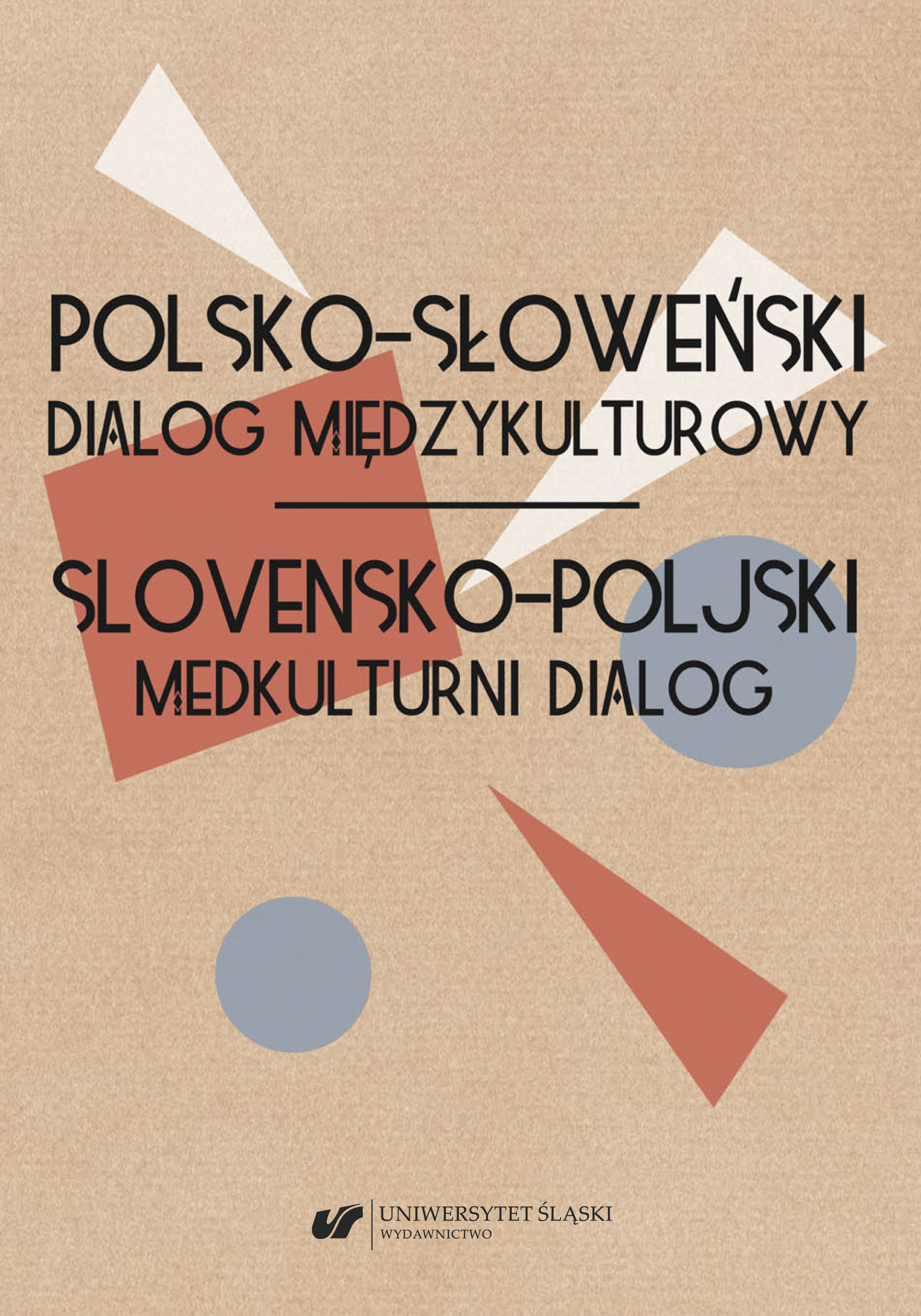
The volume addresses important issues of Polish-Slovenian intercultural dialogue and its multifaceted nature. It has been divided into five parts, each dealing with a different type of relationship and often deepening and supplementing previous reflection on the subject. Some texts, moreover, uncover areas of Polish-Slovenian dialogue that are still completely unknown. The first part deals with direct Polish-Slovenian contacts, experiences that constitute a biographical feature and are related to various types of wanderings. The authors of the texts collected in the second part present intertextual relations in the sphere of themes and literary structures between Polish and Slovenian writers. In the next part, the authors' attention is focused on literary translations, which are an important manifestation of Polish-Slovenian and Slovenian-Polish intercultural dialogue and are an expression of the need to bring the two cultures closer together and to translate them through the medium of literature. The intercultural dialogue at the level of linguistic structures, content and expression, is described in the articles collected in the next part of the volume. The last part is devoted to the sphere of education, promotion of the language and culture of both countries, cooperation in the field of higher education or selected aspects of language policy in higher education in Poland and Slovenia. The volume Polish-Slovenian Intercultural Dialogue is the outcome of the first exclusively Slovenian academic conference in Poland and in the world devoted to cultural contacts between Poland and Slovenia.
More...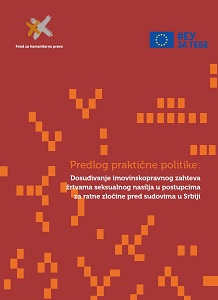
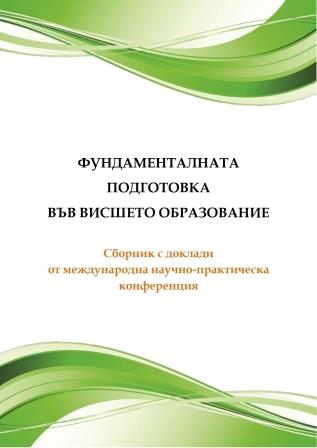
The book is published as a result of the international scientific conference, which took place at 8 November 2024. The scientific forum was organized by “Statistics and Applied Mathematics” Department of University of Economics – Varna.
More...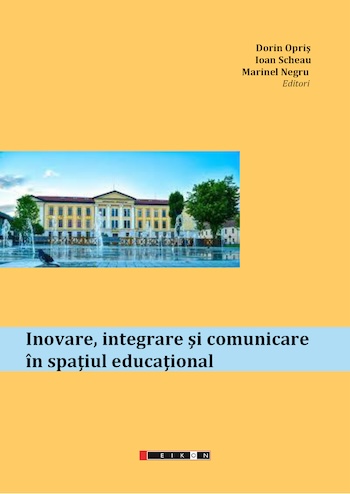
This volume includes a selection of the papers presented at the International Conference "Education in the Perspective of Values", the XVIth edition, held at the "1 December 1918" University of Alba Iulia - Romania, on October 9 - 11, 2024. The organizers of this edition were: "1 December 1918" University of Alba Iulia (Romania), "Saint Clement of Ohrid" University of Sofia (Bulgaria), University of Belgrade (Serbia), University of Helsinki, UNESCO Chair on Values, Dialogue and Human Rights (Finland), “Babes-Bolyai” University of Cluj-Napoca, the Doctoral School “Didactics. Tradition. Development. Innovation” (Romania) and Moldova State University (Republic of Moldova). We were honoured by the presence of representatives of the main research and academic centres from Romania, Republic of Moldova, Serbia and Bulgaria, professors and researchers from the academic community, as well as from institutes specialized in research in the education field, public figures concerned with identifying and promoting sustainable values for the development of children, teenagers and young adults, in different educational contexts. This year, the participation was numerous, over 70 research works being included in the three volumes published on this occasion. This year's research has included scientific fields such as: educational sciences, psychology, theology, philology, philosophy, sociology, economic sciences, engineering, computer science, music and mathematics, as well as a number of interdisciplinary fields.
More...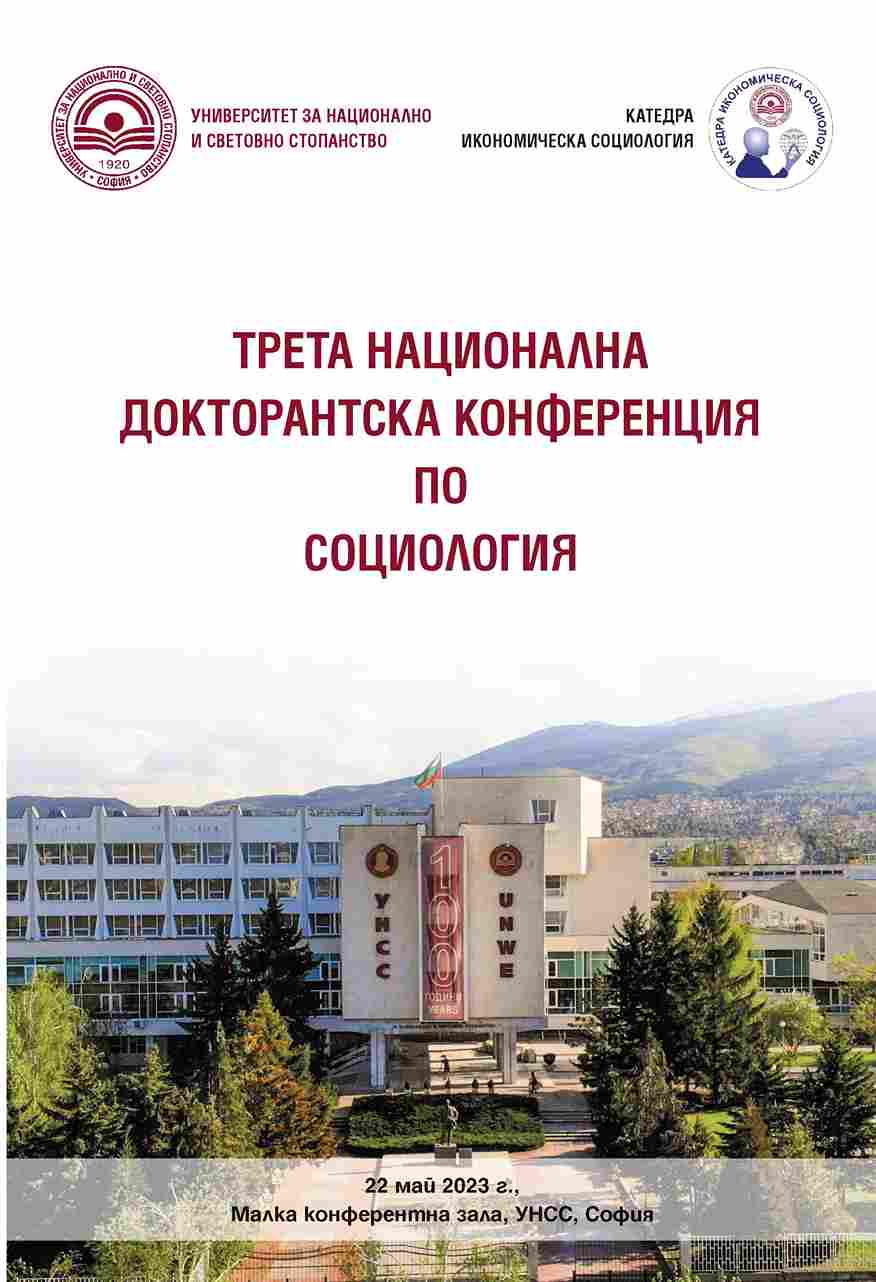
The collection of articles, presented during the Third National Doctoral Conference on Sociology at the University of National and World Economy in May 2023, addresses diverse and interdisciplinary topics reflecting the state of contemporary social research in Bulgaria. The volume brings together empirical and theoretical contributions of doctoral students, ranging from the impact of digitalization on political campaigns and labor dynamics in online platforms to explorations of professional autonomy and the symbolic boundaries of public spaces. With a strong focus on empirical methodologies, the collection provides fresh insights into themes such as organisational conflicts, healthcare reforms, transhumanism and civic engagement. Noteworthy are the innovative approaches and critical discussions led by doctoral researchers and established academics, fostering a productive exchange of ideas. This collection not only enriches the sociological discourse in Bulgaria but also has the potential to contribute to the global understanding of social transformations in post-transition contexts.
More...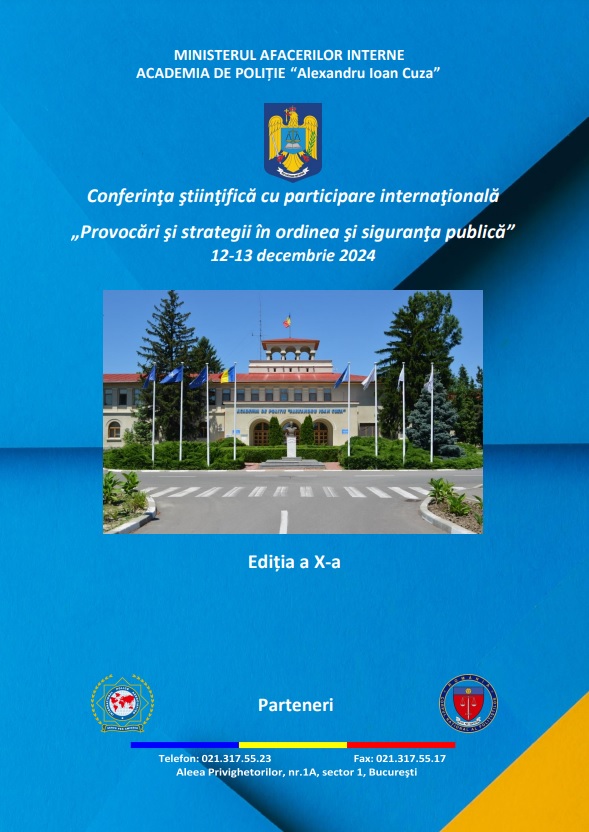
The safeguarding of public order and safety faces escalating challenges due to evolving threats and social changes. This collective work explores the primary obstacles confronting public order and safety, including technological disruptions, transnational crime, and community trust deficits. Furthermore, it evaluates strategic responses, such as the integration of advanced technologies, cross-border cooperation, and community-focused policing. The findings highlight the need for a multidisciplinary approach to address these challenges effectively and provide actionable insights for policymakers and practitioners seeking to enhance public safety resilience.
More...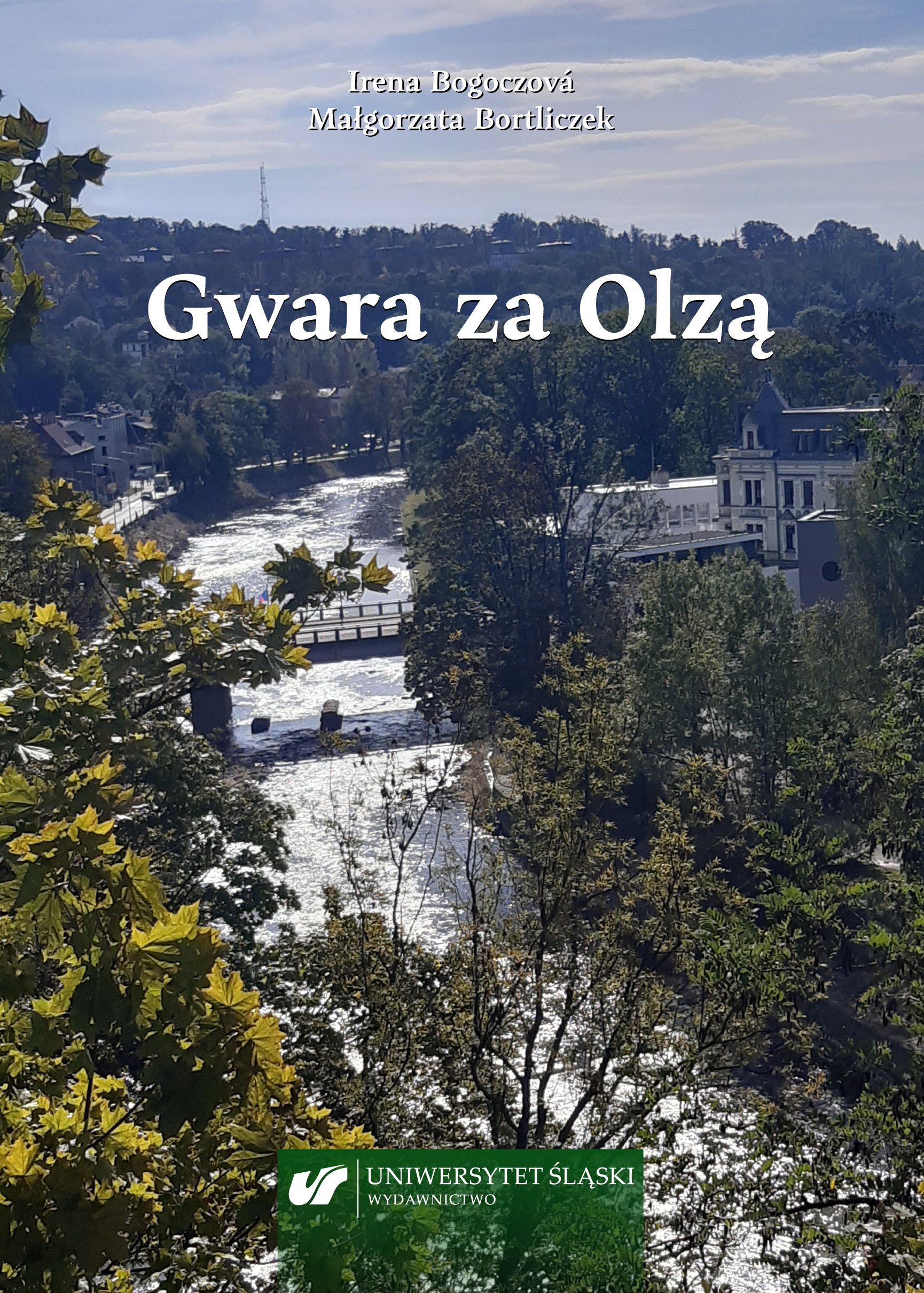
The publication brings about the linguistic material related to the present day, to current literary studies, social media, and informal conversations of the natives. It aims to comprehensively present Zaolzie's linguistic situation in a way that is also friendly to readers outside the academic environment. It shows the traditional Zaolzie dialect in the literary works of local writers and poets, who use its ludic values, and in the fiction of Czech-language regional writers. The subsequent chapters draw attention to dialectal communication in social networks: websites, podcasts, vlogs, chats, etc. According to the authors, the presence of the dialect in the Zaolzie society results from the need to promote the region and its specificity.
More...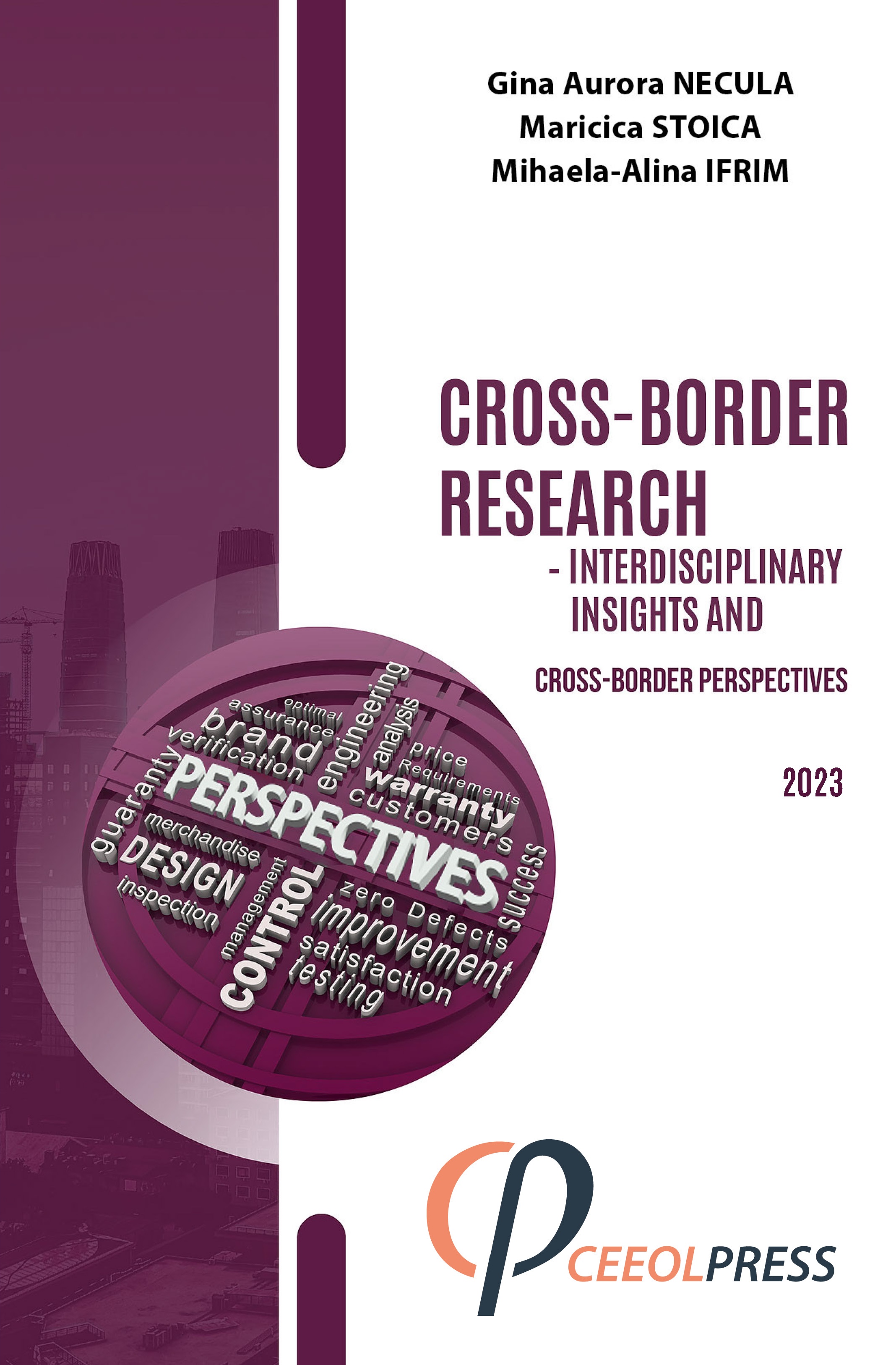
The present collective volume is under the aegis of the Cross-Border Faculty of the ‘Dunărea de Jos’ University of Galați, Romania. Founded in the spirit of cross-border cooperation and with more than twenty years of experience and tradition in both cross-border teaching and research, the Cross-Border Faculty has managed to build a multi-, trans-, and interdisciplinary academic community determined to facilitate a continuous scientific dialogue towards sharing and creating new perspectives in various fields such as education, arts and humanities and even engineering.The constant evolution of this cross-border endeavour has been concretised in recent years into large academic interdisciplinary events which have enabled the scientific dialogue not only between peers of the same academic field, but they have also permitted the collaboration and forming of new inter- and multidisciplinary teams oriented towards the advance of the higher education process, the flourishing of the business environment and the altogether improvement of society in general.Thus, Cross-Border research – interdisciplinary insights and borderless perspectives is an umbrella volume envisioned to bring together authors and topics that tackle issues such as consumers and consumerism, agriculture and food industry, administration, justice and law enforcement, finance, communication and education, and language and literature, not in a completely disconnected manner, but rather in an effort to provide a complex, diverse and useful research tool.
More...
The publication focuses on pressing issues related to the health status and access to healthcare for elderly people in Bulgaria, their social life, and their participation in the labor market. A comparative analysis of demographic trends in Bulgaria and the European Union indicates that by 2050, population aging processes will deepen, with the rate in Bulgaria exceeding the EU average. A comparison of the Active Aging Index demonstrates that Bulgaria's low position is due to the very limited participation of elderly people in social and political life. Based on data from the SHARE study, an analysis was conducted on the health status and access to medical care and services for individuals aged 55 and over. The findings conclude that a significant portion of elderly people in Bulgaria suffer from chronic illnesses and overweight, do not visit dentists, or consult medical professionals. The study highlights the extremely limited involvement of elderly people in political and social life. Significant differences in quality of life and life satisfaction were identified across various socio-demographic groups. Conclusions were drawn regarding the advantages and risks of flexible retirement and its connection to active aging. An analysis of the dynamics of working retirees from 2009 to 2019 reveals a growing participation of elderly individuals in the labor market. A key conclusion of the study is that elderly people with poorer health, unfavorable financial conditions, and lower levels of education are more inclined toward early retirement.
More...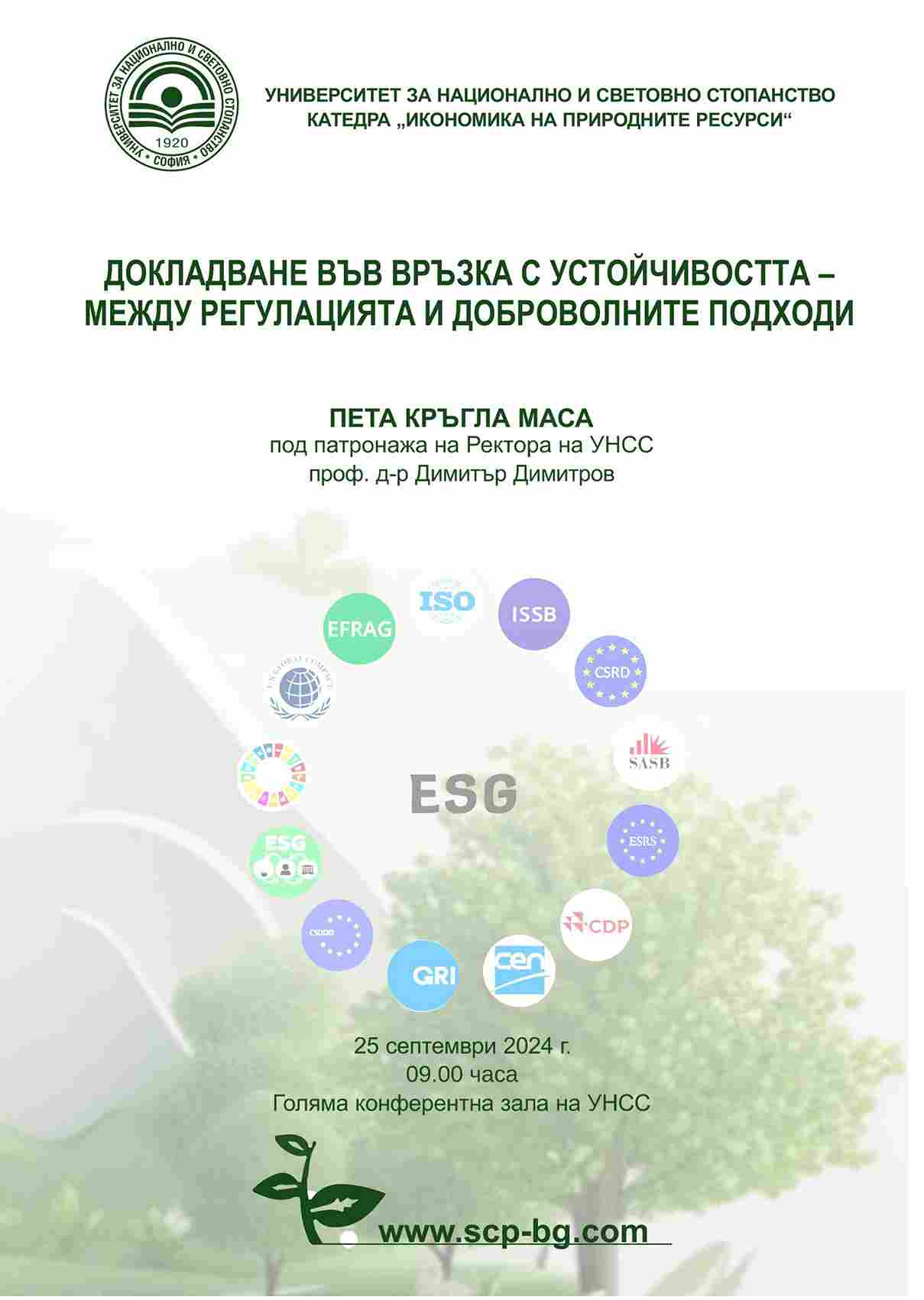
The preface addresses the organization and discussions of the Fifth Round Table on Sustainability Reporting Issues from the prospective of regulation and voluntary approaches. It describes the three panels, and the issues discussed in them. After each part, the authors analyzed the results and highlighted the most relevant practices that would support the sustainability reporting process.
More...